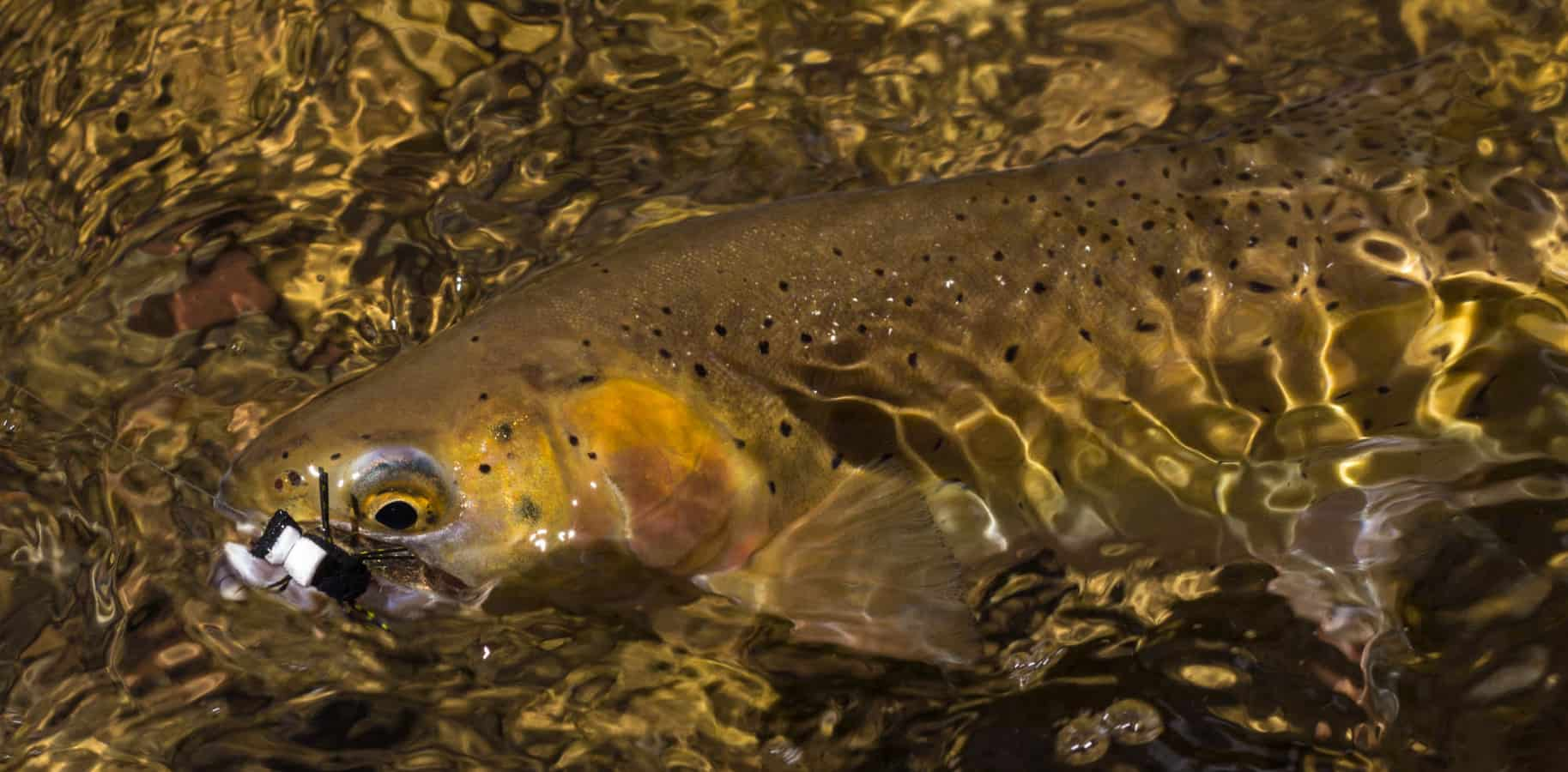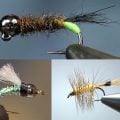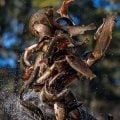Pick a Lane: How to Choose Your Dry Fly Drift

Image by Mike Doughty
There’s nothing more rewarding than watching a trout rise up to sip a dry fly. It’s the most iconic moment in fly fishing, and one we all chase. For new fly anglers, catching that first trout on a dry fly is like reaching the final boss to beat the game. Yet, as they quickly find out, getting a trout to rise is often a lot more challenging than figuring out what the fish is eating and then casting a matching fly on top of its head. Just like when you’re trying to come in under par on a golf course, it often comes down to the right approach.
Location, Location, Location
Understanding rise forms and where and why a trout is feeding in the river is vitally important to knowing how and where to present your fly. Even if you have the exact right pattern to match whatever insect the fish is feeding on, dropping your fly in at the wrong angle or drifting it at the wrong speed will usually result in the fly being ignored.
To understand how to drift your fly, you first have to recognize how a trout is feeding at a certain spot on the river and plan your drift accordingly. Some fish will be moving out from cover to grab passing insects in clear water and slow current, while others will be dashing up and smashing bugs in fast water. Often during prolific hatches, you’ll see trout continuously rising and feeding in one spot, meaning that your fly has to go right down the pipe in order to be eaten. You’ll also often see trout follow a drifting fly for several feet before taking it, just to be sure of what they’re eating.
All of these different feeding actions require a different type of approach and a different type of drift that allow you to control the speed and trajectory of your fly before it passes over the fish. While it may seem complicated, almost every form of rising trout can be caught with three simple approaches—the cross-stream drift, downstream drift, and upstream drift.
Cross-Stream Drifting
Cross-stream drifting is probably the most common way fly anglers present their fly to a fish. It’s a great approach to fish feeding close to the bank or cover and a great way to catch trout rising in fast water. It’s also probably the easiest way to drift a dry fly as it doesn’t require a long cast and is made up of only one or two simple movements.
To do a cross-stream drift, you’ll want to be standing directly across the stream, exactly parallel to or slightly upstream of where a fish is feeding. Cast your fly 3 to 4 feet upstream of the rising trout or as far upstream as you can cast while still easily maintaining control of your fly. As soon as your fly lands, make the appropriate upstream or downstream mends immediately to ensure your fly is drifting at the exact same speed as the current and then allow it to drift over the rising trout.
The cross-stream drift is a great way to approach spooky or finicky trout because it allows you to cast well upstream of a fish and gives you plenty of time to adjust your drift speed while keeping you well out of the trout’s line of sight. However, if the trout is feeding in a tight area with a lot of micro-currents that require a lot of quick adjustments or is out feeding in the center of the river, there’s another approach that may be more appropriate.
The Downstream Drift
Downstream drifting is an art form in itself that requires an angler to both mend their fly while simultaneously dumping slack line down onto the water, all while trying not to move their drifting fly. It can feel a bit like trying to pat your head and rub your stomach at the same time. But when it’s done right, the downstream drift is the perfect way to approach a mid-river feeding fish or to drift a fly in a lot of micro-currents when a simple upstream or downstream mend won’t get the job done.
To do a downstream drift, stand 15 to 20 feet (or more if you’re good enough) directly upstream of a rising trout. Make a short cast downstream so the fly lands directly in line with the trout’s feeding lane. Before the line comes tight, strip off some slack line from your reel and mend it into the drift. As previously mentioned, this can be a tricky way to approach a fish as you want to dump the slack into your drift without moving the fly. It can be a finite thing as dumping too much slack can make it impossible to set the hook when the fish eats while dumping too little slack means your fly is going to be skating all over the water on the approach. As with all things though, practice makes perfect and once you master the downstream drift, finicky trout won’t have anywhere to hide.
Upstream Drift
Whenever you’re casting to a spooky fish in clear water, your best bet for success is always going to be an upstream drift. This involves moving in directly behind a rising fish where it can’t see you and then casting upstream past the fish, far enough and accurately enough so that your fly lands and then drifts directly over the trout’s head.
Upstream drifting is a challenge because it often requires a lot of guess work. If you cast too short so that the fly lands right on the fish’s nose or in the middle of its back, you may spook it. However, if you cast too far, your fly line will splash into the water on top of the trout and you’ll definitely spook it. The trick to a good upstream drift is to cast so that your fly plops into the water at least 2 to 3 feet in front of the fish with your line and leader splashing down slightly behind it. When the fly lands in the right spot and starts drifting towards you, slowly strip up the extra slack without moving the fly so that you can make a good hook set as soon as the fish rises to meet the fly.
Rise to The Occasion
Drifting a dry fly to a finicky trout is always going to be challenging. But within that challenge you can find the very soul of fly fishing itself. Catching a trout on a dry fly is beautiful and the very reason why the sport of fly fishing was invented. When you know how to properly drift a dry fly, you can become part of that moment that made anglers first fall in love with fluttering bugs and rising trout in the first place. You can capture a piece of that wonderous instant when it all comes together in a gentle ripple on the surface of the water.











